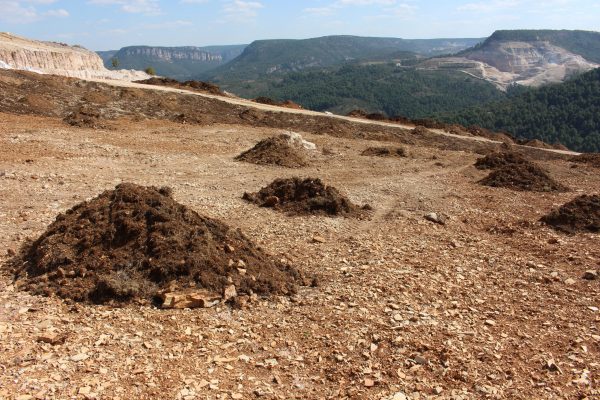The reforestation of the Santa Engracia mine was completed in the fall of 2023 and involved two main activities:
1) Establishment of an herbaceous community in the second half of September on approximately 1 ha, which had been remodeled in summer 2023, through the transplantation of a seed bank extracted from adjacent grasslands.
2) Planting of 1389 seedlings of 17 forest trees and shrubs over an area of 2 ha, which had been remodeled and revegetated with herbs and chamaephytes in 2021 and 2022. The planting was done in mid-December, and the most common species included Pinus nigra subsp. salzmannii, Quercus faginea, Buxus sempervirens, Crataegus monogyna, Amelanchier ovalis, Quercus ilex, and Juniperus thurifera. The seedlings were arranged in patches or modules on the grassland matrix, covering 21% of the treated area. Patch composition varied with the topography, using lower densities and more stress-resistant species in convex topographies and poorer soil areas, and vice versa in channels and small valleys. Additionally, a shrub hedge and a small arboretum were established for protection against game and environmental education purposes. For the arboretum, trees of high conservation and ecological value in the Alto Tajo, such as Tilia platyphyllos, Taxus baccata, Sorbus aria, and S. torminalis, were utilized. Soil preparation involved 30 × 40 cm holes dug with a motorized auger. All species were individually protected with tree shelters, except for Juniperus thurifera and Buxus sempervirens. Shelter type varied based on the ecology and growth rate of the planted species.
These tasks, added to those previously carried out in the different phases of restoration of the Santa Engracia mine, in Peñalén and also those carried out in Lousal, complete the revegetation actions of the LIFE RIBERMINE project.

liferibermine_EN




